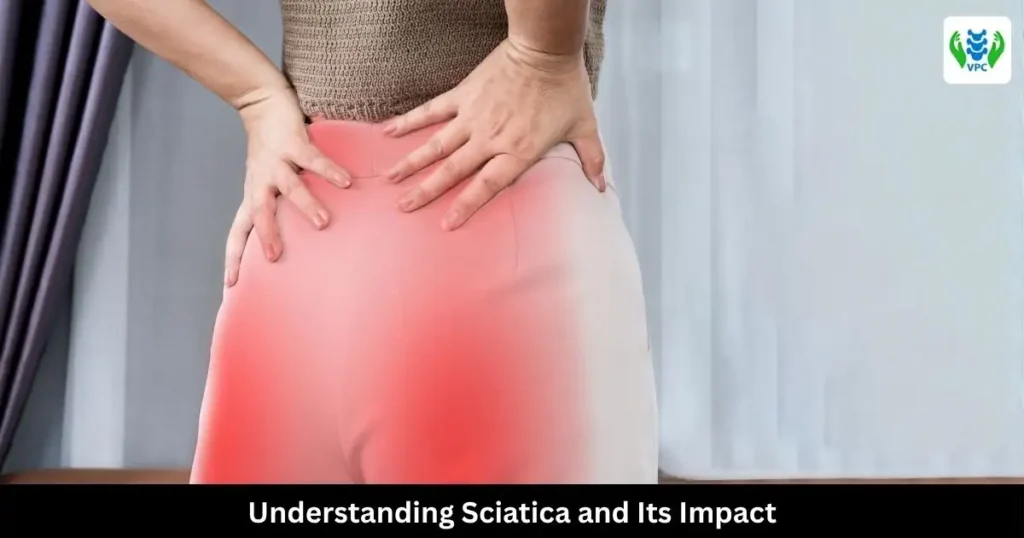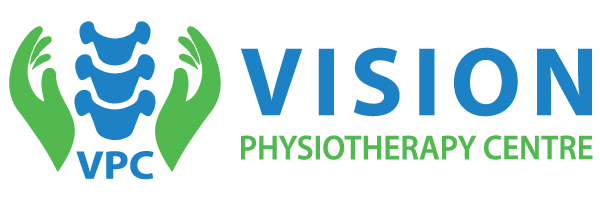Sciatica pain can be extremely uncomfortable, often causing shooting pain, numbness, or weakness that travels from the lower back down to the legs. The best physiotherapy treatment for sciatica focuses on more than just relieving pain — it aims to correct the underlying problem. By combining techniques that reduce pressure on the affected nerve, relax tight muscles, and improve flexibility, physiotherapy helps restore normal movement while easing discomfort.
A well-designed physiotherapy program includes targeted exercises, posture correction, and lifestyle guidance to ensure lasting relief. These treatments not only reduce immediate pain but also strengthen the spine and surrounding muscles, preventing future flare-ups. Unlike surgery or long-term medications, physiotherapy is a safe, non-invasive approach that delivers effective results by addressing the real cause of the pain rather than just the symptoms.
For those seeking trusted care, Vision Physiotherapy Center stands out as the best place for Sciatica Pain Treatment. Their experienced physiotherapists tailor each session to the individual’s needs, using advanced techniques and modern equipment. With a combination of expert care, personalized exercises, and focused attention, patients at Vision Physiotherapy Center achieve faster recovery, regain mobility, and return to an active, pain-free life.

Understanding Sciatica and Its Impact
Sciatica is a painful condition that occurs when the sciatic nerve — the longest nerve in the body — becomes compressed or irritated. This nerve extends from the lower back through the hips and buttocks, down to each leg. When the nerve is pinched or inflamed, it can cause sharp, shooting pain that radiates down the leg, often accompanied by numbness, tingling, or weakness. The pain may worsen when sitting, sneezing, or standing for long periods, making daily tasks more difficult.
Common causes of sciatica include a herniated disc, spinal stenosis (narrowing of the spinal canal), muscle spasms in the buttock region (especially in the piriformis muscle), or age-related degenerative changes in the spine. These conditions lead to nerve pressure and inflammation, which trigger the hallmark symptoms of sciatica. If left untreated, this nerve irritation can lead to chronic pain and reduced mobility, affecting a person’s ability to perform work or exercise comfortably.
The impact of sciatica extends beyond physical pain — it can significantly reduce one’s quality of life. Individuals may experience loss of sleep, limited movement, and frustration from persistent discomfort. Effective management not only relieves pain but also focuses on restoring normal function and preventing recurrence. Timely physiotherapy intervention can stop the condition from becoming chronic and help people return to an active, pain-free lifestyle.
Why Physiotherapy is the Best Conservative Treatment?
Physiotherapy is considered the best conservative treatment for sciatica because it targets the root cause of the problem — the pressure on the sciatic nerve — rather than just hiding the pain with medication. Through a careful combination of manual therapy, stretching, and strengthening exercises, it helps reduce inflammation and muscle tension while improving flexibility. These treatments allow the nerve to move freely again, easing pain and restoring mobility naturally.
Unlike medications that offer temporary relief or surgeries that carry higher risks and longer recovery time, physiotherapy promotes safe, long-term healing. By strengthening the back and core muscles, improving posture, and teaching proper movement, physiotherapy not only reduces current pain but also prevents future episodes. The hands-on approach and guided exercises encourage the body to heal and build resilience.
Vision Physiotherapy Center stands out as the best option for Sciatica Pain Treatment due to its patient-focused care and proven expertise. The center’s skilled physiotherapists develop personalized treatment plans tailored to each individual’s symptoms, fitness level, and lifestyle. With modern equipment, advanced manual techniques, and continuous support, Vision Physiotherapy Center helps patients achieve lasting pain relief, regain strength, and confidently get back to their daily activities — free from the discomfort of sciatica.

Best Sciatica Pain Treatment in Bangladesh
How Vision Physiotherapy Center Provides the Most Effective Cure
Vision Physiotherapy Center is widely recognized as the leading destination for sciatica pain treatment in Bangladesh. Our approach begins with a detailed assessment to identify the exact cause of sciatic nerve irritation, whether it stems from a herniated disc, muscle tightness, or poor posture. This allows our physiotherapists to design fully personalized treatment plans aimed at reducing pain, improving flexibility, and restoring normal nerve function.
We combine advanced manual therapy, spinal mobilization, electrotherapy, shockwave therapy, and targeted exercise programs to relieve pressure from the nerve and promote lasting recovery. Each session is carefully structured to relax tight muscles, enhance blood circulation, and strengthen the core and back muscles for better spinal support. This integrated method ensures not only immediate pain relief but also the prevention of future flare-ups.
At Vision Physiotherapy Center, we focus on healing through movement, education, and empowerment. Our team uses state-of-the-art equipment and evidence-based practices to encourage natural recovery without the risks of medication or surgery. By addressing both symptoms and underlying causes, we help patients regain mobility, confidence, and a truly pain-free lifestyle—making Vision Physiotherapy Center the top choice for effective sciatica cure in Bangladesh.
Comprehensive Physiotherapy Treatments for Sciatica
Physiotherapy for sciatica focuses on relieving pain, reducing nerve irritation, and improving mobility through different proven techniques. These treatments work together to target the nerve, muscles, and joints so the body can heal naturally and regain normal function without surgery or strong medication. The aim is not just to stop the pain but to help patients move freely and confidently again.
Cryotherapy (Cold Therapy)
Cold therapy is used in the early stages of sciatica when swelling and sharp pain are common. It reduces inflammation and numbs the painful area, providing quick relief. Applying ice packs or cold compresses helps soothe irritated nerves and control tissue swelling effectively.
Thermotherapy (Heat Therapy)
Once the initial pain and swelling ease, heat therapy becomes very helpful. It boosts blood flow to stiff muscles and soft tissues, helping them relax and become more flexible. Heat packs or warm towels can ease tightness, reduce spasms, and make stretching exercises more comfortable.
Electrotherapy Modalities
Several gentle electrical treatments are used to manage pain and support healing.
- TENS (Transcutaneous Electrical Nerve Stimulation): Sends small electrical pulses through the skin to block pain signals and provide immediate relief.
- Interferential Therapy (IFT): Delivers deeper electrical stimulation to reduce swelling, improve circulation, and lessen muscle spasms.
- Ultrasound Therapy: Uses sound waves to increase blood flow, speed up tissue repair, and reduce inflammation around the sciatic nerve.
Manual Therapy
Hands-on techniques like spinal mobilization improve the movement of spinal joints and release pressure on the nerve. Soft tissue mobilization, such as gentle kneading
or stretching, helps loosen tight muscles and break down tough tissue adhesions that may be pressing on the sciatic nerve.
Traction Therapy
This method gently stretches the lower spine to relieve pressure on nerve roots. By creating more space between the vertebrae, traction helps free the trapped sciatic nerve, reduces pain, and improves spinal alignment. It is particularly beneficial for patients with disc-related sciatica.
Shockwave Therapy
Shockwave therapy uses focused sound waves to stimulate healing in the affected area. This modern, non-invasive technique improves blood flow, reduces inflammation, and relaxes tight muscles surrounding the sciatic nerve — offering fast and long-lasting pain relief that many traditional treatments overlook.
Dry Needling and Acupuncture
These techniques target specific trigger points in tight muscles that contribute to sciatic nerve compression. By inserting fine needles into these areas, therapists can release muscle tension, decrease spasms, and improve nerve function, leading to reduced pain and better mobility.
Massage Therapy
Massage helps improve circulation and relax muscles that may be pressing on the sciatic nerve. It also reduces stress and promotes overall relaxation, which supports a faster and more comfortable recovery. Regular therapeutic massage can complement other physiotherapy treatments for long-term relief and improved flexibility.
Exercise Therapy for Sciatica
Exercise plays a key role in recovering from sciatica and preventing the pain from coming back. The right exercises help reduce pressure on the sciatic nerve, strengthen supporting muscles, and improve flexibility. Physiotherapists carefully design exercise plans that match each person’s fitness level and stage of recovery, ensuring safe and effective progress. Consistency with these exercises allows the body to regain balance, stability, and pain-free movement.
Stretching Exercises
Gentle stretching helps reduce tension in muscles that commonly irritate the sciatic nerve. Stretches for the piriformis, hamstrings, and lower back — such as the piriformis stretch, hamstring stretch, and knee-to-chest stretch — ease tightness and improve flexibility. These movements help the nerve glide smoothly, relieving pressure and reducing pain down the leg. Regular stretching keeps muscles loose and prevents stiffness from returning.
Strengthening Exercises
Building strength around the core, glutes, and back is essential for stabilizing the spine. Exercises like planks, bridges, and back extensions provide support to the lower back, reducing the load on the lumbar region and protecting the sciatic nerve. A stronger core improves posture and distributes movement forces evenly, helping to prevent future nerve irritation or disc strain.
Aerobic Conditioning and Functional Retraining
Low-impact aerobic exercises such as walking, swimming, or using an elliptical machine enhance blood flow, promote healing, and keep the body active without putting stress on the back. Alongside aerobic training, physiotherapists also focus on motor control and functional retraining — teaching safe movement patterns, lifting techniques, and proper bending habits. This helps patients manage daily activities comfortably while keeping the spine aligned and protected. Over time, these combined exercises not only relieve pain but also strengthen the body for lifelong spinal health.
Posture and Ergonomics
Proper posture reduces mechanical stress on the sciatic nerve:
- Maintain lumbar support while sitting, avoid slouching.
- Ergonomic recommendations for sleeping positions include side-lying with a pillow between knees.
- Workplace ergonomics focusing on correct chair height, frequent breaks, and foot positioning help minimize nerve irritation.
Lifestyle Modifications
- Staying active and avoiding prolonged bed rest prevent muscle weakening and stiffness.
- Weight management reduces lumbar spine load, decreasing sciatica risk and severity.
- Smoking cessation improves blood flow and tissue healing.
When to Consider Surgery?
Surgery is a last resort, reserved for:
- Severe motor weakness
- Loss of bowel or bladder control
- Persistent pain unrelieved after exhaustive conservative therapy over several weeks or months
Most patients benefit from thorough physiotherapy before exploring surgical options.
Addressing Key Content Gaps
- Physiotherapy modalities like shockwave therapy and advanced nerve mobilization promote nerve regeneration and muscle relaxation by stimulating cellular repair and reducing fibrosis.
- Detailed safety profiles show physiotherapy modalities have minimal side effects compared to medications or surgery.
- Stepwise exercise guides with visuals, patient testimonials, and real-life case studies build trust and adherence.
- Common myths, such as “bed rest is best” or “pain must be endured,” are debunked, emphasizing active management.
- Practical tips on choosing a qualified physiotherapist include checking credentials, treatment approach, and individualized care philosophy.
- Interactive symptom self-assessment tools can guide timely professional consultation.
Frequently Asked Questions (FAQs)
Question 1: What is sciatica, and how can physiotherapy help?
Answer 1: Sciatica is nerve pain caused by compression of the sciatic nerve. Physiotherapy helps reduce pain, restore mobility, and prevent recurrence through targeted modalities and exercises.
Question 2: Is physiotherapy more effective than medication or surgery for sciatica?
Answer 2: Physiotherapy is often more effective and safer, providing long-term pain relief and function restoration without the risks of surgery or medication side effects.
Question 3:What specific physiotherapy treatments are used to relieve sciatic nerve pain?
Answer 3: Treatments include cold and heat therapy, TENS, ultrasound, manual therapy, traction, dry needling, and exercise programs.
Question 4: How long does it typically take to recover from sciatica with physiotherapy?
Answer 4: Recovery varies but often takes weeks to a few months depending on severity and compliance with treatment.
Question 5: What kinds of exercises will a physiotherapist recommend for sciatica?
Answer 5: Stretching, strengthening, aerobic conditioning, and motor control exercises personalized to reduce nerve pressure and build spinal stability.
Question 6: Can I treat my sciatica with exercises at home, or do I need a physiotherapist?
Answer 6: Home exercises are helpful but professional guidance is essential to ensure safety and effectiveness.
Question 7: Is dry needling or acupuncture effective for sciatica?
Answer 7: Yes, they help release muscle spasms and improve blood flow, reducing nerve irritation and pain.
Question 8: What is the role of posture and ergonomics in preventing sciatica flare-ups?
Answer 8: Proper posture and ergonomic adjustments reduce nerve compression during daily activities, preventing flare-ups.
Question 9: When should I consider surgery for sciatica instead of physiotherapy?
Answer 9: Surgery is considered only after conservative treatments fail or if serious neurological symptoms emerge.
Question 10: How do I choose the right physiotherapist for my sciatica pain?
Answer 10: Look for licensed professionals with experience in spinal disorders, personalized treatment plans, and positive patient outcomes.
This comprehensive physiotherapy approach is the gold standard for sciatica treatment—prioritizing pain relief, functional recovery, and long-term prevention through scientifically supported, patient-centered care.




